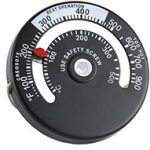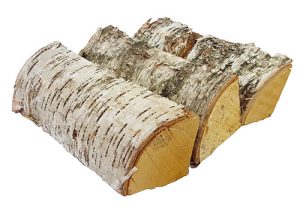We would like to offer some advice for burning ash and oak logs in your stove or wood burning appliance.
The main point to keep in mind is that ash and oak are a very dense species of wood (oak being more dense than ash), meaning there’s a lot of wood fibres contained within the logs; this is what lends them to burning for such long periods when compared with other softer species of hardwoods such as birch, and all of the softwood varieties.
As they are so dense, this means putting slightly more thought in to building and lighting your fire, although not so much with logs as dry as ours, but worth noting when building your fires none the less!
Building your fire with very large and chunky logs likely won’t catch fire very well – we recommend building your fire up with firelighters, kindling and smaller pieces of logs before placing larger ones in to your stove or burner, and to have your fire burning for a good 5-10 minutes before even thinking about picking up a larger piece.
The larger pieces (in diameter, as our kiln dried logs are always cut to 25cm exactly though vary in width) come in to their own once your fire is established and you want a long lasting fire that needs very little tending to. Each log should burn for up to an hour or more each, and as each log produces over 4kw per hour, you shouldn’t ever need more than 2 logs in your stove at a time – allow the logs to burn down to glowing embers before placing more logs on the fire.
You will not need to add more kindling or firelighters when adding new logs to your fire once it is established – frustrating fires that are difficult to light and sustain are now a thing of the past.
If you follow this advice, burning ash and oak logs in your stove or log burner will be a joy – a much different experience if you are used to burning softwood or mixed loads. Of course, it is the moisture content in your logs that ultimately dictate how easy they light and the heat produced.
Further reading: Kiln Dried Oak Logs – Ideal for Intensive Use

 Today we received our Ready To Burn Certificate of Approval from Woodsure who are part of HETAS – confirming the sample of logs they tested from us were less than 20% moisture.
Today we received our Ready To Burn Certificate of Approval from Woodsure who are part of HETAS – confirming the sample of logs they tested from us were less than 20% moisture. Stove thermometers generally attach to your flue pipe by a magnet mounted on the rear, and provide instant feedback in how hot your fire is burning.
Stove thermometers generally attach to your flue pipe by a magnet mounted on the rear, and provide instant feedback in how hot your fire is burning.
 Kiln dried birch logs make excellent firewood – they catch fire quickly and warm your home faster than the other hardwood species, making them ideal if you use your stove or log burner primarily in the evenings or at the weekend.
Kiln dried birch logs make excellent firewood – they catch fire quickly and warm your home faster than the other hardwood species, making them ideal if you use your stove or log burner primarily in the evenings or at the weekend. For customers that use their stoves intensively throughout the day, we have introduced kiln dried oak logs this year.
For customers that use their stoves intensively throughout the day, we have introduced kiln dried oak logs this year.